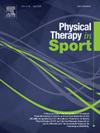低能量可用性风险和女性青少年运动员的赛季损伤:一项针对学校赛季的前瞻性队列研究
IF 2.2
3区 医学
Q1 REHABILITATION
引用次数: 0
摘要
目的探讨季前低能量可得性(LEA)风险与女性青少年随后运动季受伤率之间的关系。DesignProspective队列。学术研究实验室。参与者:13-18岁的青少年女运动员。主要结果测量在季前评估中完成女性低能量可用性问卷(LEAF-Q),包括与lea指标(损伤史、胃肠道症状、月经功能)相关的问题。LEAF-Q评分≥8分提示LEA风险高。然后参与者完成了每周的调查,评估在整个9周的运动赛季中持续的后续损伤。我们使用泊松回归计算损伤率比,以LEAF-Q得分<;8或≥8为预测因子,以运动相关的时间损失损伤数量为结果,并对协变量进行调整。结果59名参与者完成了研究(年龄= 15.9±1.43)。12名参与者在赛季中受伤14次。大多数损伤为肌肉骨骼(93%;N = 13)。LEAF-Q评分≥8的运动员每次运动暴露的受伤率高于LEAF-Q评分≥8的运动员(比率比= 3.41;95%可信区间:1.12-11.4;p = 0.03)。结论在为期9周的运动季中,高LEA风险的青少年女性比低LEA风险的青少年更容易发生损伤。赛季前的LEA筛查可以识别出有赛季中运动相关损伤风险的个体。本文章由计算机程序翻译,如有差异,请以英文原文为准。
Low energy availability risk and in-season injuries among female adolescent athletes: A prospective cohort study over a school-season
Objective
To prospectively examine the association between pre-season low energy availability (LEA) risk and injury rates among female adolescents during the subsequent athletic season.
Design
Prospective cohort.
Setting
Academic research laboratory.
Participants
Adolescent female athletes ages 13–18 years.
Main outcome measures
The Low Energy Availability in Females Questionnaire (LEAF-Q) was completed at a pre-season evaluation including questions related to LEA-indicators (injury history, gastrointestinal symptoms, menstrual function). LEAF-Q scores ≥8 indicate high LEA risk. Participants then completed weekly surveys assessing subsequent injuries sustained throughout the 9-week athletic season. We calculated an injury rate ratio using Poisson regression with LEAF-Q scores <8 or ≥8 as the predictor, number of sport-related time-loss injuries as the outcome, adjusting for covariates.
Results
Fifty-nine participants completed the study (age = 15.9 ± 1.43). Twelve participants sustained 14 injuries during the season. Most injuries were musculoskeletal (93 %; N = 13). Those with LEAF-Q scores ≥8 had a higher injury rate per athletic exposure vs LEAF-Q scores <8 (rate ratio = 3.41; 95 % confidence interval: 1.12–11.4; p = 0.03).
Conclusion
Female adolescents at high LEA risk were more likely to sustain an injury than those at low LEA risk during a 9-week season. Pre-season LEA screening may identify individuals at risk for sustaining an in-season, sport-related injury.
求助全文
通过发布文献求助,成功后即可免费获取论文全文。
去求助
来源期刊

Physical Therapy in Sport
医学-康复医学
CiteScore
4.50
自引率
8.30%
发文量
125
审稿时长
39 days
期刊介绍:
Physical Therapy in Sport is an international peer-reviewed journal that provides a forum for the publication of research and clinical practice material relevant to the healthcare professions involved in sports and exercise medicine, and rehabilitation. The journal publishes material that is indispensable for day-to-day practice and continuing professional development. Physical Therapy in Sport covers topics dealing with the diagnosis, treatment, and prevention of injuries, as well as more general areas of sports and exercise medicine and related sports science.
The journal publishes original research, case studies, reviews, masterclasses, papers on clinical approaches, and book reviews, as well as occasional reports from conferences. Papers are double-blind peer-reviewed by our international advisory board and other international experts, and submissions from a broad range of disciplines are actively encouraged.
 求助内容:
求助内容: 应助结果提醒方式:
应助结果提醒方式:


